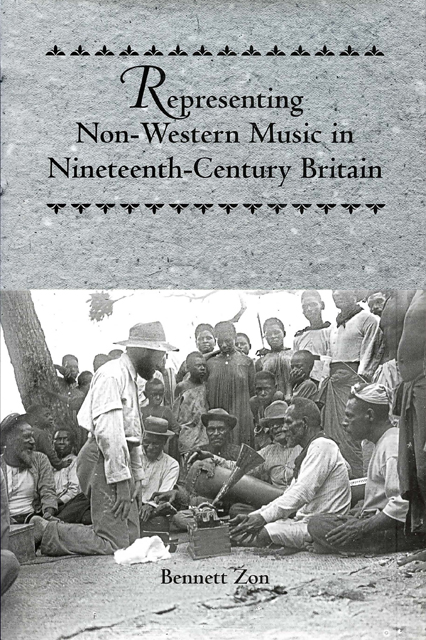Book contents
- Frontmatter
- Dedication
- Contents
- List of Illustrations
- Preface
- Acknowledgments
- Introduction Humanizing the Musical Savage: Orientalism and Racism in the History of British Ethnomusicology
- Part One Early Anthropological Influences
- Part Two Musicology in Transition to Evolution
- Part Three Individualism and the Influence of Evolution: Charles Samuel Myers and the Role of Psychology
- Part Four Retaining Cultural Identity: A. H. Fox Strangways and the Problems of Transcription
- Epilogue The “Ethnomusicology” in Long Nineteenth-Century Representations of Non-Western Music
- Works Cited
- Index
- Eastman Studies in Music
Chapter Sixteen - Fox Strangways and The Music of Hindostan
Published online by Cambridge University Press: 10 March 2023
- Frontmatter
- Dedication
- Contents
- List of Illustrations
- Preface
- Acknowledgments
- Introduction Humanizing the Musical Savage: Orientalism and Racism in the History of British Ethnomusicology
- Part One Early Anthropological Influences
- Part Two Musicology in Transition to Evolution
- Part Three Individualism and the Influence of Evolution: Charles Samuel Myers and the Role of Psychology
- Part Four Retaining Cultural Identity: A. H. Fox Strangways and the Problems of Transcription
- Epilogue The “Ethnomusicology” in Long Nineteenth-Century Representations of Non-Western Music
- Works Cited
- Index
- Eastman Studies in Music
Summary
As Martin Clayton suggests, the putative relationship between translation and transcription in Fox Strangways is problematical:
It is tempting, moreover, to see Fox Strangways’s whole project in terms of his passions for translation. Musical sound is, of course, untranslatable: a musical transcription is essentially a graphic representation of a temporal, sonic form, whereas a text transcription, however unsatisfactory, attains the status of a linguistic text in its own right. It is often argued, of course, that much literature is also “untranslatable” and can in fact only be transformed into essentially new literary products. The difficulties of literary translation are, however, of a different order from those of musical translation: since musical meaning is so ephemeral and, largely, non-referential, it is surely impossible to conceive of expressing the meaning of one piece of music in another musical language.
As Clayton partially concedes slightly later on, however, it is possible to view transcription as translation, not simply because of their range of metaphoric similarities, discussed below, but also because of the very subjective nature of the two and the way in which that subjectivity is resisted. Interestingly, he does remark that Fox Strangways’s transcription could be seen as
quasi-translation: the original unwritten music is committed to the written page and assigned a fictional metre, so that (like a translation perhaps) it becomes more familiar, while also becoming something different in kind from the source document. One can imagine a musically literate Western reader humming some version of the tune, derived from and yet quite different from the original. The transcription is, in a sense, an authentic cultural document of a particular kind—a product of the interaction between individuals of different cultural backgrounds within a particular (colonial,Edwardian …) context. Its relationship to the music may be tenuous, but it could be argued that as long as we see it for what it is, it remains a valuable document.
- Type
- Chapter
- Information
- Representing Non-Western Music in Nineteenth-Century Britain , pp. 277 - 290Publisher: Boydell & BrewerFirst published in: 2023



